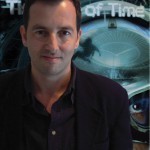The Writing Process Blog Tour
 Anita Loughrey has kindly asked me to join The Writing Process Blog Tour. The idea is that I say something about my writing process, post it on my blog, and then pass the torch onto three more writers to do the same. And it’ll go on like that until every writer in the world has written about their writing process, and then it’ll stop. I think that’s the idea anyway. You can read Anita’s fascinating and funny contribution to the blog tour at http://amloughrey.blogspot.co.uk/2014...
Anita Loughrey has kindly asked me to join The Writing Process Blog Tour. The idea is that I say something about my writing process, post it on my blog, and then pass the torch onto three more writers to do the same. And it’ll go on like that until every writer in the world has written about their writing process, and then it’ll stop. I think that’s the idea anyway. You can read Anita’s fascinating and funny contribution to the blog tour at http://amloughrey.blogspot.co.uk/2014...
So, here we go with mine…
What am I currently working on?
I’m currently very busy on several projects. On the fiction side, I’m writing the final volume in a series of six stories set in ancient Rome about a young gladiator. I’m also writing a scary short story about a cryptid, provisionally entitled The Big Grey Man, which I’m hoping to get published in an e-zine that’s published my stories before. When I’m not writing either of those, I’m working on any one of about three non-fiction projects. They include a series aimed at young people about what it’s like to grow up in various countries. Photographers based in those countries take photographs of a young person during the course of their day – having breakfast with their family, going to school, doing chores, having fun – and I must write the words for it. That’s not all I’m working on right now, but this could get quite long if I listed everything, so I think I’ll stop there!
How does my work differ from others of its genre?
I write books in lots of genres, so this is a difficult question to answer. But whether we’re talking science fiction, horror, historical, steampunk or time travel, I always try to write the books in my own style and not imitate anyone else in that genre. Although I write books mainly for young people, I try never to talk down to my readers. In fact, I think of them as equals and partners in the journey we set out on together. And that means no compromises. Whatever it is I’m attempting to say, I’ll work and work at it until I find the best way of saying it, using exactly the right language, and not oversimplifying for the sake of it. If that sounds like I write horribly complex stories with loads of long words, then I’ve given completely the wrong impression! I hope my books are clear and fun to read, but I do like to spend an awfully long time honing each sentence until it sounds exactly right. I’m a writing geek in that way – obsessed with words and how they sound. I’ve even been known to read dialogue passages aloud while working in my study, which can come as quite a shock to any members of my family who happen to be passing.
Why do I write what I do?
Most of my writing is commissioned, so I’m writing to a brief. When given free rein to write what I like, I tend towards subjects like the supernatural, the fantastical and the weird. I’m not sure why that should be. It may be because I grew up in a fairly dull suburb of London and my imagination rebelled against my surroundings. Also, I hated school, and perhaps the stories I made up were a way of escaping from that particular reality. It’s something that’s continued into adulthood. Even though I lead quite an interesting and contented life these days, I still feel this overpowering need, every so often, to escape into the other world of my imagination. Writing allows me to do this.
How does my writing process work?
I sit down at my keyboard and start typing…
Sometimes I wish it was that simple. The writing process varies depending on what I’m working on. If I’m writing a scary story, like the one I’m working on at the moment about the Big Grey Man, my starting point is always: what do I find scary? I’m not easily scared by fiction (though I am by real life – a scuttling beetle or a sharp word from my wife can bring me out in a cold sweat!), so there’s a fair chance that if I’m scared by an idea, others will find it scary too. Writing scary fiction is hard, though, because you don’t have the advantage of a creepy soundtrack or clever camera angles and lighting, as horror film directors do. What you can do is to create a journey into terror. The reader has to be a willing partner on this journey, but if they’re ready to partake, a good writer can lead them by a sequence of steps towards a climax that is just as scary as anything in the cinema. First I need to create a real-seeming character that the reader might conceivably care about. Then I introduce something slightly odd into the plot. This might be something as simple as a job offer or a tattooed stranger or a recurring dream. If I do my job right, the slightly odd can quickly become unnerving, the unnerving can become alarming, and the alarming can become, by the end of the story, downright terrifying. It seems quite simple when written down like that, but it is actually very difficult to do well. You have to use things like ‘atmosphere’ and ‘suggestion’ and ‘pacing’, which I won’t write about here because they deserve whole blogs to themselves.
With the gladiator books, I knew I had to work out a plot that contained certain features. Each book had to include a couple of fight scenes. Then there had to be some sort of progress towards solving the central mystery of the series. I had to find important roles for each of the central characters and give them their own story arcs. All this took a lot of planning and flow charts and coffee and late night scribbling of ideas that were usually indecipherable the next morning. And that was before I’d written even a word of the story. The writing of the story is actually fairly straightforward compared to the chaos of plotting. I work from a detailed synopsis, which I frequently alter as the story progresses. The one factor that can sabotage the writing process at this stage, even if you have the most perfectly engineered plot, is a rebellious character. Characters quite often like to do their own thing, and the writer has to be like a wise parent, making constant judgements on whether to let his progeny enjoy themselves, or ruthlessly whip them into line if he thinks they’ve gone too far. In the penultimate gladiator book, one of the main characters falls in love. That wasn’t in the synopsis – it just happened quite accidentally in the writing process. I then had to decide what to do about it. What were the consequences of this sudden drastic change in the plot? More coffee, more flowcharts. In the end, I let nature take its course, but then sneakily manipulated things so that the lovers were parted at the end of the book. Perhaps they’ll meet again in the final volume. I’ll just have to see how things go…
I was told to pass the baton on to three writers, but I could only find two (either because every other writer in the world has already been tagged for this tour, or because I left it too late to find someone). However, I could not wish to pass on the torch (baton, whatever) to two finer writers, both of them stablemates of mine at the interactive publisher, Fiction Express for Schools. I admire their work tremendously. You can read their blogs about their writing process on Monday 26th May.
Stewart Ross
Prize-winning author Stewart Ross was inspired to write by his great-grandfather, a vast Scotsman with a spreading beard who wrote an extraordinary novel (Mildred Murdoch) and masses of rather bad dum-de-dum poetry. After teaching all over the world, Stewart became a full-time author in 1989. He has written numerous books, fiction and non-fiction (a term he hates) for both children and adults. Much of his recent work has been historical fiction, a genre he much enjoys, especially when the past stretches into the future as in his recent YA success The Soterion Mission. (Sequel, Revenge of the Zeds, out in September.) He also writes plays, lyrics and other bits and pieces, and teaches writing in England and France. Stewart lives near Canterbury with his wife, four occasional children and Chess the ageing sheepdog. Each morning he commutes ten metres to work in a large hut in the garden.
In all literary matters Stewart is represented by James Wills of Watson, Little Ltd – jw@watsonlittle.com
Sharon Gosling
 Sharon Gosling always wanted to be a writer. She started as an entertainment journalist, writing about television series such as Stargate and Battlestar Galactica. Her first novel was published under a pen name in 2010.Sharon and her husband live in a very small cottage in a very remote village in the north of England, surrounded by sheep-dotted fells. The village has its own vampire, although Sharon hasn’t met it yet. The cat might have, but he seems to have been sworn to secrecy and won’t say a thing.
Sharon Gosling always wanted to be a writer. She started as an entertainment journalist, writing about television series such as Stargate and Battlestar Galactica. Her first novel was published under a pen name in 2010.Sharon and her husband live in a very small cottage in a very remote village in the north of England, surrounded by sheep-dotted fells. The village has its own vampire, although Sharon hasn’t met it yet. The cat might have, but he seems to have been sworn to secrecy and won’t say a thing.




